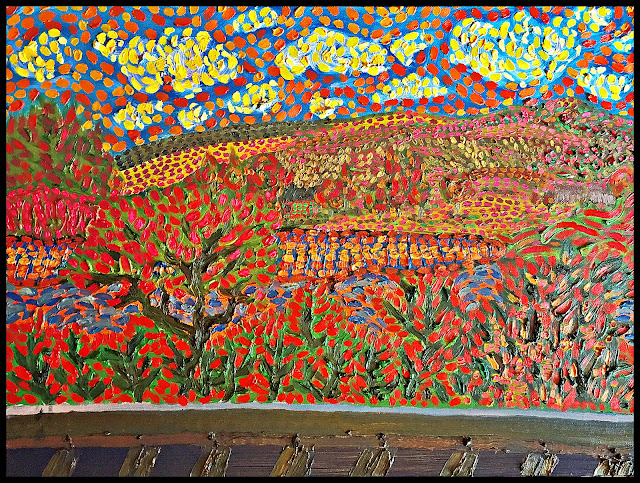About 6 months ago I went to the Taft Museum to see a guest exhibit of work on loan from the collection of The Santa Barbara Museum of Art in California. I went with my then new girlfriend Michelle, we had a good time and remain much closer today, which I'm very thankful for. It was an inspiring exhibition, we were both glad we went; the painting that inspired me the most was a painting by Stuart Davis, which happens to also be the painting surrounding this post; the original seen here:
 |
| Stuart Davis "Yellow Hills" c.1919 oil. |
Most of my posts usually are all about art or my processes n so on, but today's post is a little different; the reason for this is due to the fact that I'm still recovering from eye surgery to repair 2 tears in my left retina. For the last month I've been deathly afraid of losing the sight in the one eye, which would be very tragic, especially with me being a visual artist n all, I feel much better as the surgery went well, and recovery seems on schedule, but the scare it has put in me fades slowly...
Above 2 photos: I've posted the sketch I made from Stuart Davis's "Yellow Hills" c.1919 and the initial painting I finished the night we got back from the museum. I wasted no time at all getting something done via the inspiration I received from the exhibition that day, but it has taken me over 6 months getting back to finishing what I had started...shown below is where I am with it today after my second sitting since just before surgery last week:
As it stand for now, perhaps the 1st sitting is better than the 2nd seen here...but today I'm not concerned with the recurring topic of "when is an artist finished?"; I am only concerned with the new question that I've never truly digested before: "Am I happy to just be able to paint, or do art in the first place?"
That answer is: YES!!! I am, and I hope to no longer take it as for granted I have in the past, ever again.
amen
And here's to a full and speedy recovery...
amen















